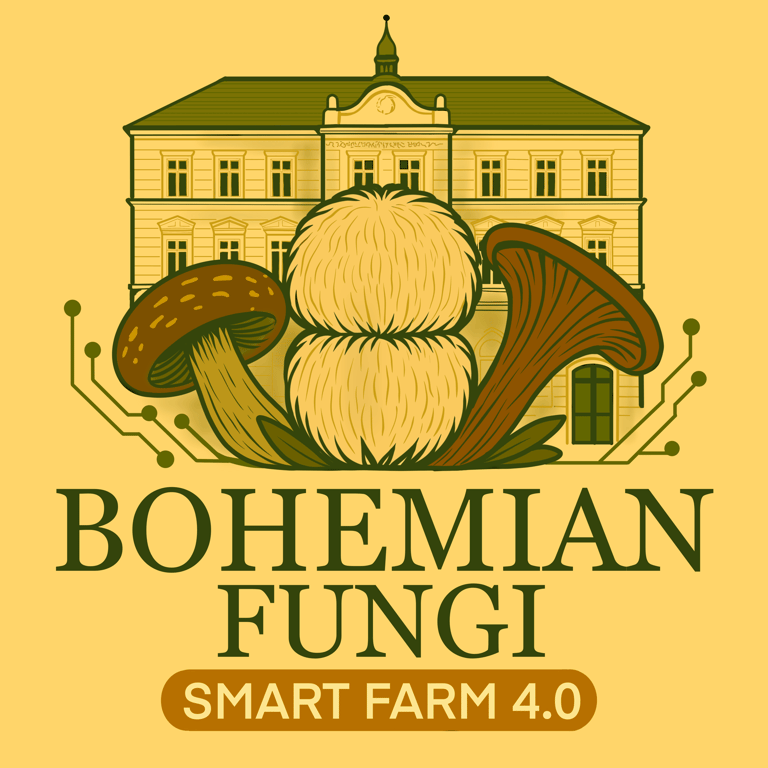The Microbiology of Shiitake Cultivation
Explore the fascinating microbiology behind shiitake mushroom cultivation, from spores and mycelium to modern sustainable farming in Prague.
FUNGI SCIENCE
10/6/20252 min read
Shiitake Mushrooms: More Than Just Flavor
Shiitake mushrooms (Lentinula edodes) are celebrated for their rich umami taste and health benefits, but behind every harvest lies a hidden world: microbiology. Understanding the microbes that support shiitake cultivation helps farmers (like us in Prague) grow healthier, more sustainable crops—and brings better mushrooms to your kitchen.
The Role of Spores in Shiitake Cultivation
Shiitake mushrooms begin their life as microscopic spores. These spores germinate into fine threads called hyphae, which intertwine to form mycelium. This living network is the foundation of mushroom growth, acting as both root system and nutrient highway.
Mycelium: The Heart of Shiitake Farming
Nutrient Breakdown: Mycelium secretes enzymes that break down complex organic matter in substrates like hardwood sawdust or oak logs.
Defense System: Shiitake mycelium competes with bacteria and molds, producing natural antibiotics that protect its territory.
Symbiosis with Microbes: Beneficial bacteria can actually help shiitake grow by stabilizing the growing environment and improving nutrient availability.
This microbial teamwork ensures that shiitake mushrooms not only survive but thrive.
The Microbial Ecosystem in Substrates
In modern farms, shiitake are grown on sterilized sawdust blocks. Here’s why sterilization matters:
It eliminates competing molds that would otherwise consume nutrients.
It allows shiitake mycelium to colonize the substrate efficiently.
Once colonized, the shiitake mycelium becomes dominant, creating a controlled microbial ecosystem where only the desired mushroom flourishes.
In log-based traditional methods (still used in Asia), shiitake must fight harder against native microbes, which is why yields can be less predictable.
Fruiting: The Microbiology of Mushroom Formation
When conditions are right—temperature, humidity, and oxygen—shiitake mycelium triggers the next stage: fruiting. At this point, the fungus shifts its energy from spreading underground to building the visible mushroom.
This transition is heavily influenced by microbial signals and environmental stress. Even slight shifts in CO₂ levels can signal mycelium to form caps and stems instead of spreading further.
Shiitake and Human Health: A Microbial Connection
The same microbiology that allows shiitake to flourish also makes them nutritionally powerful. Compounds like lentinan, a beta-glucan found in shiitake cell walls, are byproducts of microbial metabolism and are known for their immune-boosting properties.
Why This Matters in Prague
At our Prague farm, we combine ancient microbiological wisdom with modern sustainable practices:
Growing on eco-friendly substrates (sawdust, straw, wood byproducts).
Using precision climate controls to maintain the right microbial balance.
Recycling spent substrate into compost, ensuring nothing goes to waste.
This approach ensures fresh, nutrient-dense shiitake mushrooms reach home cooks and chefs across Prague.
Final Thoughts
Behind every shiitake mushroom is a microbial story of spores, mycelium, and enzymes. By understanding and respecting the microbiology of shiitake cultivation, we create food that is not only delicious but also sustainable and deeply connected to nature.
Discover the science in every bite—shop fresh shiitake mushrooms from our Prague farm today.
Or you can also follow us on Instagram to see what's up at the farm.
